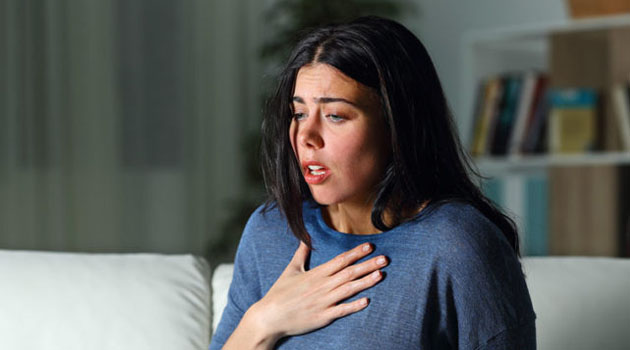Panic attacks are quite common and can be extremely disturbing especially when you get it the first time. Studies have revealed that there is a 23% chance of getting a panic attack once in a lifetime even if you don’t suffer from any particular disorder. Being a woman means you are twice as likely to suffer this compared to men. Symptoms of thick attack set very quickly and are quite noticeable.
These panic attacks may appear to be very dangerous but are not life-threatening. In order to effectively deal with a panic attacks recognizing the symptoms and distinguishing it from other ailments like heart attack etc. is a must. Below are 10 symptoms of a panic attack:
Symptom 1: Heart Palpitations
Repeated heart palpitations coupled with an occasional missing of a heartbeat is a common symptom of a panic attack. Do not always mistake this condition to be a heart attack. The easiest way to deal with this situation is to start breathing slowly and lower the heartbeat.
Symptom 2: Chest Pain
Chest pain and tightness accompanied by breathlessness, heart palpitations and anxiety is another common symptom. Though the symptoms are similar to a heart attack, in a panic attack these symptoms are temporary and soon pass.
Symptom 3: Sweat
Sweating is generally not seen as a symptom, but more like a physiological mechanism. In this symptom of panic attack some people may sweat profusely and some may sweat lightly. During the sweating, the body loses a lot of water; hence one of the ways of combating this is to continuously rehydrate the body. This can also be coupled with a slowing down of breathing to relax the body faster.
Symptom 4: Trembling or shaking
Trembling or shaking is a symptom of panic attacks caused by the same reason as sweating – excess secretion of the adrenal hormones. When the body does not find any use of the excess adrenal hormone, it leads to sweating and trembling also. The trembling generally affects the arms hands, legs, and feet. The best way to deal with such a situation is to slow down the breathing so that the body relaxes faster.
Symptom 5: Dizziness or Fainting
Another symptom due to increased production of adrenalin is dizziness or fainting. As the breathing becomes faster and the heartbeat also becomes faster or uneven, the intake of air increases and causes lightheadedness. This leads to dizziness and fainting in some people. These symptoms are temporary and the best way to deal with them is to sit or lie down in a place till the symptoms subside.
Symptom 6: Excess Sensitivity
In panic attacks, some people may suffer from sensual distortion i.e. increased levels of sensitivity of various senses. A common form of this is hearing distortion including ringing in the ears. This is a temporary symptom of a panic attacks and the best way to deal is to remain calm and allow the symptom to die down.
Symptom 7: Trembling or shaking
Some people suffer from skin rashes during a panic attack. This is mainly because of the increased secretion of the stress hormone during this attacks. The best response in such a situation is not to panic and remain calm. If the rash persists consulting with a healthcare professional is advised.
Symptom 8: Tingling or numbness
During a panic attack, certain parts of the body may be prone to numbness or a feeling of tingling. In some people, such a feeling may occur throughout the whole body. The best way to deal with such a panic attack is to stay calm and sit or lie down and wait for the panic attack to pass away.
Symptom 9: Dry Mouth
Dryness in the mouth is another symptom associated with a panic attack. During a panic attack since breathing becomes fast, and the mouth remains open, there is dryness in the mouth. Another reason is the acid reflux which occurs during a panic attack. Sipping water is the best way to deal with this symptom
Symptom 10: Fear of Dying
Fear of dying or losing control is also a symptom of a panic attack. This is mainly because of the increased heartbeat, palpitations, fast breathing, etc. in most such cases the feeling passes as soon as the panic attack subsides.


Comments